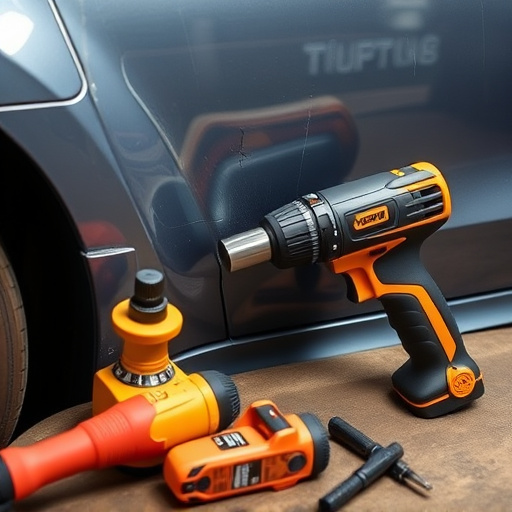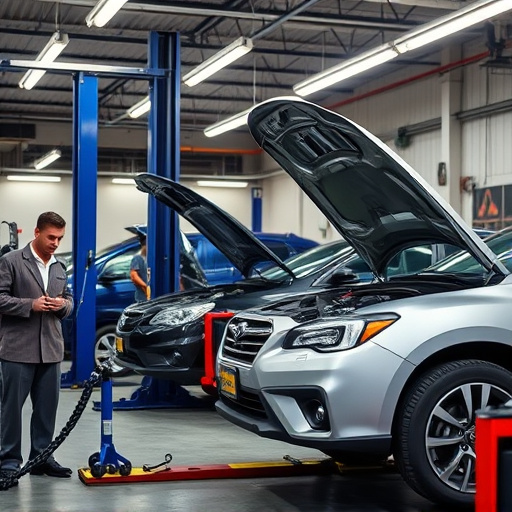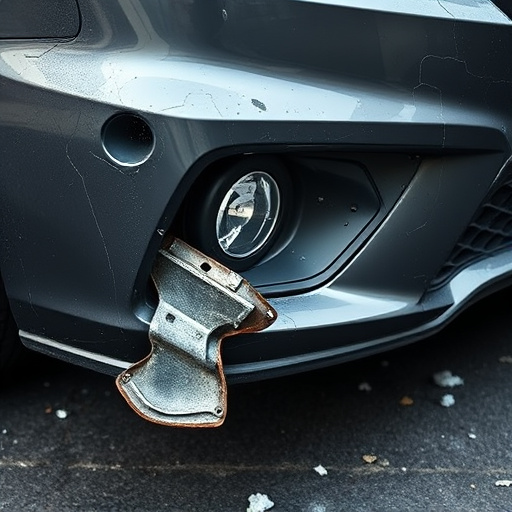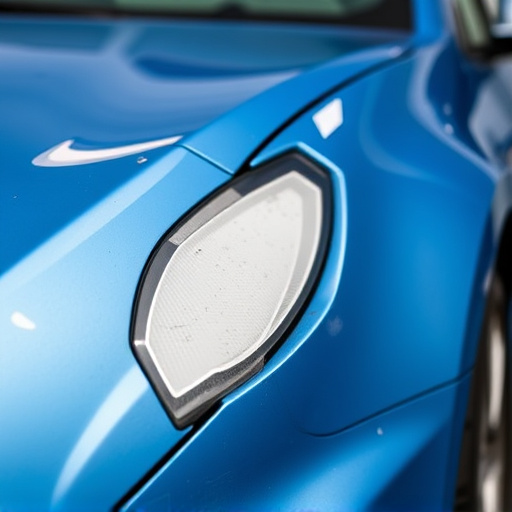Fender dent repair is a meticulous process that restores damaged car bodies to their pre-collision state. Severity of damage determines the repair method, ranging from quick 1-2 hour fixes for minor dings to complex repairs taking several days. Technicians assess damage and use specialized tools, employing methods like paintless dent removal or traditional patching. Paint preparation and finishing stages also factor into repair time, ensuring a seamless, long-lasting outcome.
Fender dent repairs are a common necessity, but understanding the process and expected timeline can be daunting. This article breaks down everything you need to know about how long it takes to fix those pesky dents. We’ll explore the various factors influencing repair time, from the complexity of the damage to the chosen method. By delving into the intricacies of fender dent repair processes, we aim to optimize efficiency, ensuring your vehicle returns to its pre-dent condition faster and smoother than you think.
- Understanding Fender Dent Repair Processes
- Factors Affecting Repair Time
- Optimizing Efficiency in Fender Dent Repairs
Understanding Fender Dent Repair Processes

Fender dent repair is a specialized process that involves restoring damaged car bodies to their pre-collision condition. It’s not just about making a dent go away; it requires precise techniques and materials to ensure the integrity of the vehicle’s structure remains intact. The process begins with an assessment to determine the severity of the damage. Minor dents can often be corrected using techniques like painting over, where the dented panel is smoothed and then painted to match the surrounding surface. More significant dents might need metal working, where skilled technicians use tools to reshape the panel back to its original form.
This intricate work demands expertise and patience. After the dent is corrected, the panel is primed, prepared, and then painted to achieve a seamless finish. The time taken for fender dent repair varies based on several factors, including the size and complexity of the damage, the availability of replacement parts, and the skill level of the auto body technicians involved. What’s more, vehicle collision repair professionals may also need to address other associated damages, such as creases or dents in adjacent panels, further adding to the repair time. Auto body work can range from quick fixes for minor dents to extensive repairs that could take several days to complete, especially for complex car collision repair cases.
Factors Affecting Repair Time
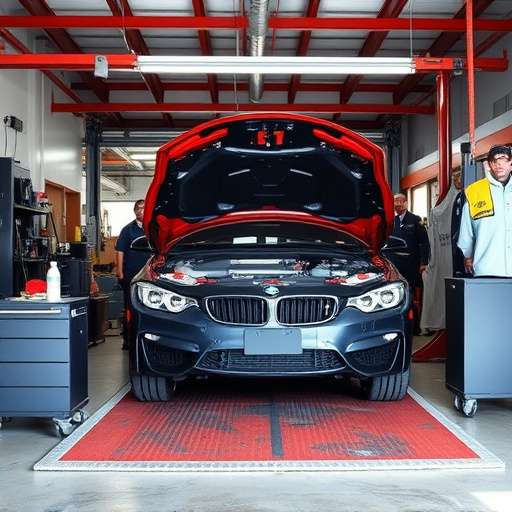
The duration of fender dent repair can vary greatly depending on several factors. First, the severity of the dent plays a crucial role; minor dings and dents may take as little as an hour or two to fix, while larger, more complex damage could extend the process to several days. The size and shape of the dent also matter; odd shapes or areas with limited access might require additional time due to the difficulty in reaching all parts evenly.
Another significant factor is the method employed for repair. Traditional methods involving filling and sanding can be quicker but may not offer the same level of precision as modern techniques like PDR (Paintless Dent Repair). Auto bodywork experts also consider the type of paint and its condition; older or poorly applied paint might necessitate more time to ensure a seamless, long-lasting finish. In terms of auto collision repair, preparation and finishing stages, including surface cleaning and quality control checks, contribute to the overall repair time.
Optimizing Efficiency in Fender Dent Repairs

In the realm of vehicle bodywork, fender dent repairs are a common concern for car owners. Optimizing efficiency in this process is key to ensuring quick and effective restoration of vehicles. The first step involves assessing the damage, which can vary from minor dents to more significant creases. Modern techniques allow technicians to precisely diagnose the issue using specialized tools, enabling them to tailor the repair approach accordingly.
Once the dent is accurately identified, the repair process begins. Skilled professionals employ a range of methods, including paintless dent removal and traditional patching, each with its advantages. Paintless dent removal, for instance, preserves the original finish by gently pushing out dents without sanding or painting, making it an efficient and cost-effective option for minor repairs. In contrast, traditional patching might be necessary for deeper dents, requiring meticulous craftsmanship to blend seamlessly with the vehicle’s existing bodywork. This multifaceted approach ensures that fender dent repairs are not only swift but also of the highest quality, enhancing the overall vehicle restoration experience.
Fender dent repair times can vary, but understanding the processes and factors involved can help set expectations. Optimizing efficiency through advanced techniques and tools significantly reduces repair durations. In most cases, a professional can efficiently restore your vehicle’s exterior, minimizing downtime and ensuring high-quality results. When looking for fender dent repair services, consider these factors to ensure a swift and effective restoration.
